Please Note: A previous version of this review, published June 19, 2020, contained erroneous test data that affected the scoring. This new version of the review contains the correct data and scores. We regret any inconvenience this may have caused Canon and our readers.
The Canon EOS-1D X Mark III is the latest version of the original EOS-1D X, Canon’s flagship in its EOS DSLR series. Like the original full-frame 1D X version (which was itself derived from the earlier APS-H size EOS-1D Mark IV), the new model is aimed at professional sports photographers and features a newly-developed 20-megapixel CMOS sensor for faster readout. Combined with a new DIGIC X processor, the Mark III is capable of continuous shooting at up to 16 fps using the viewfinder, or up to 20 fps in live view mode using either an electronic or mechanical shutter with AF.
Autofocus consists of a new high-resolution sensor with 191 selectable AF points (151 cross-type), accessible via the optical viewfinder that leverages “deep learning” tech for tracking heads and faces. In live view mode, the camera adopts dual pixel AF for focusing and tracking for stills and video.
With a rugged body and layout similar to previous EOS-1D X models, the Mark III has numerous back-lit buttons to aid operation in low light, and also has a new AF point controller option. This is built within the two AF-On buttons that uses an optical sensor to track thumb movement. The optical viewfinder has a high 0.76x magnification and relatively long 20mm eye relief, while to the rear there’s a 3.2″ (2.1 million dot) touchscreen LCD.
Video capture is a strong point, with the Mark III offering full-width 5.5K/60p 12-bit RAW for oversampled DCI 4K with internal recording to CFexpress cards, albeit with the AF locked. However, there are also cropped 4K/60p (UHD and DCI) options with AF and full-width Full-HD up to 120fps. The Mark III also features a Canon Log Gamma option, captured as a 10-bit HEVC/H.265 file, which is easier to grade in post-processing.
Workflow improvements for content delivery include built-in Wi-Fi and Bluetooth connectivity using the Low Energy protocol for connection to a smart device. The Mark III also has built-in gigabit ethernet that supports secure SFTP protocols and built-in GPS.
Key specifications:
- 20MP CMOS sensor
- 191-point AF system plus dual pixel AF
- Native ISO 100-102,400, with expansion to ISO 50– 819,200
- 16 fps viewfinder, or up to 20 fps in LV mode with electronic/mechanical shutter
- 3.2″ touchscreen LCD
- 5.5/4K 60p video, Full HD up to 120fps
Overall performance
Click on the score chart above to open the Canon EOS-1D X Mark III product page.
The new Canon EOS-1D X Mark III sensor achieves an overall DXOMark score of 91 that places it in the 28th spot overall in our database of full-frame and MF sensors, and in joint first place for full-frame Canon cameras alongside the Canon EOS 5D Mark IV.
The EOS-1D X Mark III sensor has a relatively strong response in our Portrait (Color Depth) category, measured at 24.2 bits, but it has an excellent maximum dynamic range of 14.5 EV at its lowest two ISO sensitivity settings (ISO 50 and ISO 100). That’s the widest dynamic range of any Canon camera measured to date.
Maximum dynamic range at low ISOs doesn’t immediately translate into a high Sports (low-light ISO) value, of course. For it to do well here, the sensor must have a wide dynamic range at high ISOs. However, the Mark II’s sensor performs very well, with a computed 3248 ISO, based on our subjective image quality parameters for a minimum dynamic range, color depth, and SNR 18% value.
Image quality compared
Although manufacturers have been improving sensor sensitivity in new models, the increases in maximum dynamic range and color depth over the last few years, generally speaking, have been more noticeable at lower ISO settings, mostly as a result of improved read-out capabilities. Sony and Nikon have proved to be successful here for years, but it seems that Canon has caught up.
As with the previous EOS-1D models, the Canon EOS-1D Mark III has an extended ISO 50 option, which in terms of sensor sensitivity is really no different to the ISO 100 setting. We measured both ISO 50 and ISO 100 settings to be the same at ISO 66, which means readout noise is well controlled. That’s practically the same sensitivity as the outgoing Mark II, but Canon has improved the dynamic range by around 1 EV up to ISO 400. A dynamic range of nearly 14 stops at ISO 400 in the new model is significant, and there’s some improvement at higher ISOs, albeit very slight.
If you compare maximum dynamic range at low ISOs to the best-in-class Sony A7R IV and Nikon D850 models, the Canon EOS-1D Mark III is only 0.2-0.3 EV behind, respectively. And at ISO 400 and above, the Mark III actually has an increasingly wider dynamic range than those two models. Admittedly it’s not a huge difference at the mid ISO settings, but at ISO 3200 and above, we measured around +0.5 EV in favor of the Mark III. Bear in mind that this data is normalized, and that the larger pixel size of the Mark III is likely to mean that the Mark III’s dynamic range is even wider at the pixel level. —And that’s particularly so at low ISOs, where read-out and dark noise aren’t dependent on pixel size.
A maximum color depth of 24.2 bits is excellent, but it’s still bit behind other sports- and action-oriented cameras (such as the outgoing Nikon D5), though it’s around the same as its predecessor, the Canon EOS-1D X Mark II. And when compared to the best-in-class landscape and studio cameras, such as the Panasonic Lumix DC-S1R and the Nikon D850, it’s some 2 bits lower at its maximum—though, just as with dynamic range values, such a small difference is likely be down to normalization.
As we’ve already mentioned, the Mark III’s noise levels are well controlled at high ISOs and dynamic range is excellent. As a result, the Sports score of 3248 ISO is very strong, outperforming rivals such as the Nikon D5 at 2434 ISO and the Nikon D850 at 2660 ISO. Crucially, though, the Mark III is right up alongside the newest contender to the sports-oriented segment, the Sony a9 II. With a score of 3434 ISO, the Sony has only just over a +0.1 EV advantage in sensor sensitivity, which is negligible.
Click here to open our interactive DXOMARK image sensor ranking tool.
In-depth comparisons
As a sports- and action-oriented model, the Canon EOS 1Dx Mark III is aimed at the same market as the Sony a9 II and the Nikon D5. (We have not yet tested the brand-new Nikon D6.) All three tested models are built for speed, so it will be interesting to see how that criterion affects sensor performance.
Portrait (color depth)
As we’ve already established, the Mark III’s maximum color depth of 24.2 bits at both the expanded ISO 50 setting and at ISO 100 (both measured at ISO 66), doesn’t improve over its predecessor’s and is perhaps a little lower than expected. Nevertheless, anything over 22 bits is still considered to be excellent, and the difference of just 0.8 bit between the Mark III and the Nikon D5 and the Sony a9, which max out at around 25 bits, would be barely noticeable.
Color depth drops just below 24 bits (23.6 bits measured) at ISO 200 and remains very slightly behind, but at every other ISO setting (certainly from the maker’s ISO 800 setting and upwards), the Mark III’s sensor performance is very close to that of the Nikon D5 and the Sony a9 II.
If we compare the results on the graph, color depth naturally decreases at a steady and uniform rate against sensitivity. And while the a9 II has a slight uptick in color depth at the manufacturer’s ISO 102,400 setting with an increase of 1 bit over the Mark III’s at the same setting, the Canon sensor sees a similar upward trend at ISO 204,800, though still some 0.6 bit lower than the a9II. Still, the fact the Canon sensor’s sensitivity extends beyond the a9 II sensor’s up to ISO 819,200 is a benefit that the Sony can’t match.
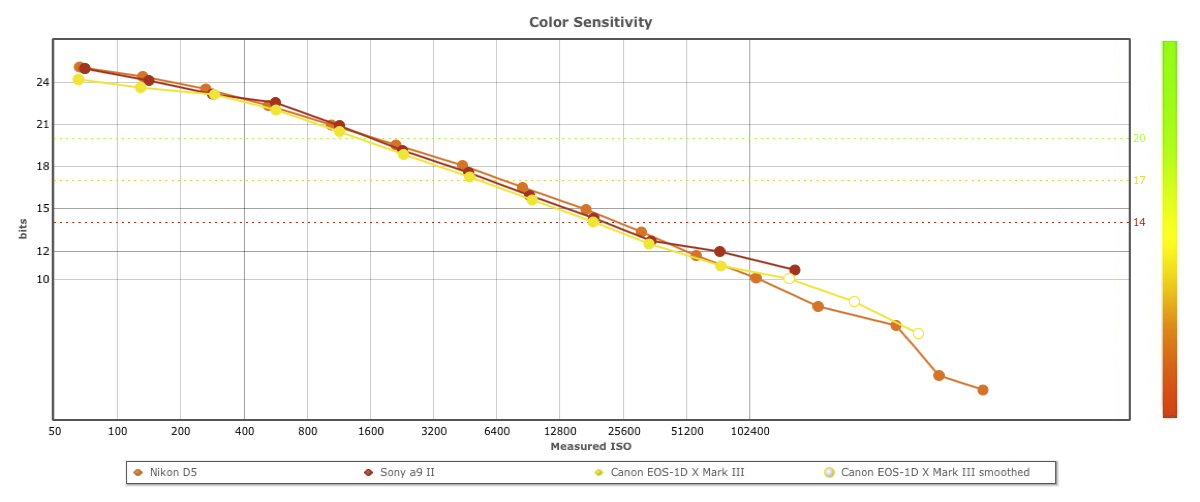
The Mark III hits our minimum quality threshold at 14 bits at the manufacturer’s !SO 25,600 setting (measured ISO 18,482). However, both the Sony and Nikon sensors are just inside that threshold at their ISO 25,600 settings (measured at 18,633 and 17,085) at 14.3 and 14.9 bits, respectively, which highlights the somewhat arbitrary nature among manufacturers’ ISO settings.
Landscape (dynamic range)
The Mark III’s dynamic range at ISO 50 (again, measured at ISO 66, with the same measured value for ISO 100) is excellent. Not only is it some 2.2 EV wider than the outgoing Nikon D5, it is also wider than the Sony a9 II by almost 0.5 EV.
Curiously, all three models share the same sensor characteristics, with the same measured sensitivity for both ISO 50 and 100 settings (which means the two overlap on the graph). Despite that, the Mark III’s sensor maintains a wider dynamic range between ISO 200-400 than the a9 II (and the Nikon D5), which is impressive. It’s not until ISO 800, where the Sony a9 II sees a bump in performance, that the dynamic range of the Sony matches the Mark III.
Both show a similar dynamic range through to a second spike in performance for the Sony a9 II at ISO 102,400, where there’s around a 0.6 EV wider dynamic range over the Mark III, which continues through ISO 204,800. The Canon sensor continues to perform well, though, just nudging our 6 EV minimum quality threshold at an impressive ISO 204,800. In fairness, the Sony a9 II never falls below our minimum quality threshold, but again, the Canon’s higher sensitivity is an impressive advantage.
Like Sony, Nikon usually champions dynamic range at lower ISOs, but the D5’s maximum dynamic range is noticeably lower at 12.3 EV. The Nikon’s flat curve over ISO 50-800 would be impressive if it weren’t for the fact that the dynamic range is lower than that for both rivals. Still, it goes to show that low noise doesn’t necessarily improve dynamic range.
Clearly the Mark III’s sensor performance is superior to the outgoing Nikon D5’s, with noticeably wider dynamic range up to the manufacturer’s ISO 3200 settings. Above that setting, however, the two cameras perform practically identically, though as we saw with color sensitivity, the Mark III has a slight advantage in dynamic range over the Nikon D5 at the two very highest ISO settings.
Sports (low-light ISO)
The Mark III controls noise levels pretty well, and has lower noise than the Nikon D5 from ISO 400 upwards, though the D5 was introduced in 2016. What’s more interesting is how the Mark III stacks up against the newer Sony a9 II (although it doesn’t use an entirely new sensor either). Against the a9II, the Mark III doesn’t quite have the same noise levels at the lower ISO settings up to ISO 200, but beyond that, the Mark III and a9II perform similarly, with the latter showing a very slight advantage in our graph.
The Mark III is consistently around the same dB level as the Sony a9 II at each of our quality thresholds (excellent, good, and minimum). Maximum ISO at 30 dB maintains what we perceptually define as acceptable image quality (that is, a dynamic range of 9 EV and a color depth of 18 bits); the Mark III’s maximum ISO is 3248 ISO against the Sony’s 3434 ISO — a difference of just over 0.1 EV in favor of the Sony a9 II.
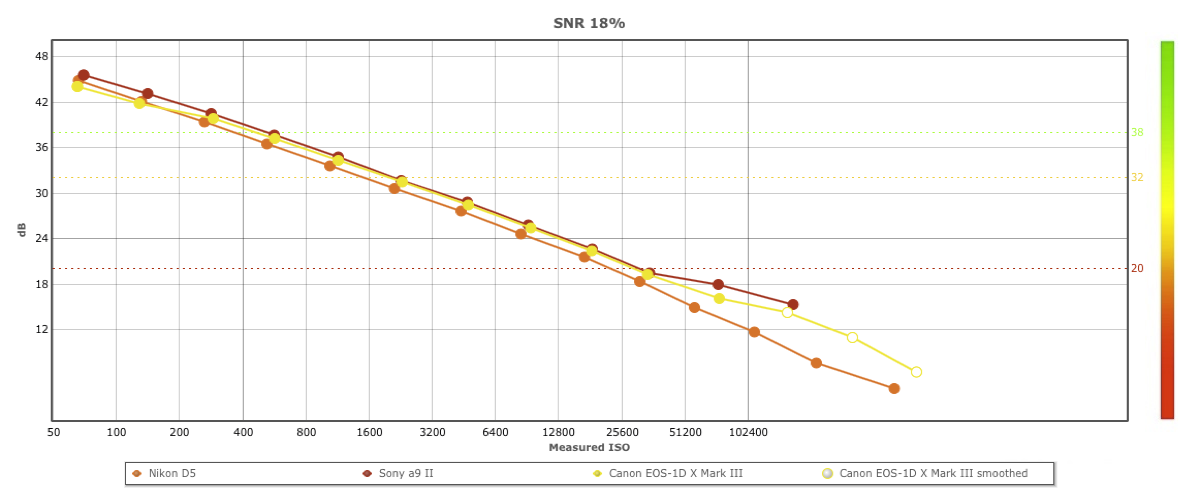
Conclusion
Sports journalism is a highly competitive field and requires a camera that can keep pace with the action unfolding in front of the lens. The Canon EOS-1D X Mark III has been designed with that one goal in mind. Although we at DXOMARK test only sensor performance and no other features, at face value it’s an incredibly fast DSLR with not only blazing AF speed, incredible continuous shooting rates and a prodigious buffer, but also an equally impressive sensor.
Admittedly, it’s not quite at the bleeding edge in our metrics for sensor performance, even if the Canon EOS-1D X Mark III sees a dramatic improvement in dynamic range. At this level, there’s far more to camera selection than outright sensor performance.
Like the Nikon D5 and the Sony a9 II, such cameras are highly specific and a niche purchase. If you’re already a Canon user with a significant investment in lenses and other dedicated system accessories, then there’s not enough difference here in sensor dynamics to get you switch brands. If you’re new to the market, there’s a lot to consider, but even then the Canon EOS-1D X Mark III is still more than a worthy contender for your hard-earned cash.
In this review, we have compared the Canon EOS-1D X Mark III to its most relevant rivals from other brands. As usual, you can create your own comparisons and in-depth analyses using our interactive image sensor ranking tool.


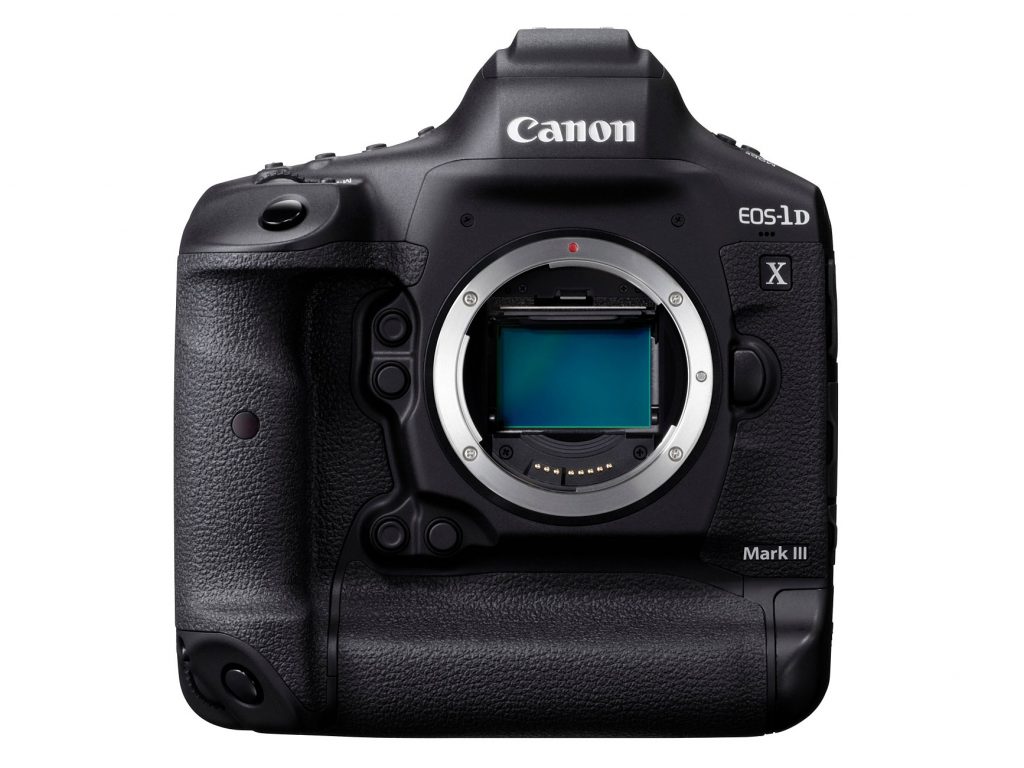


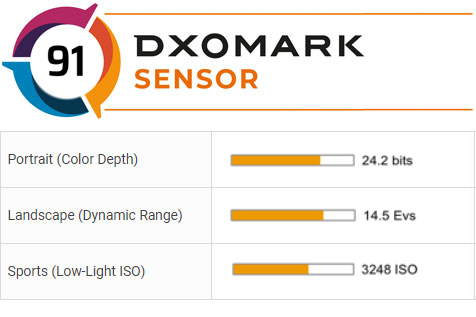
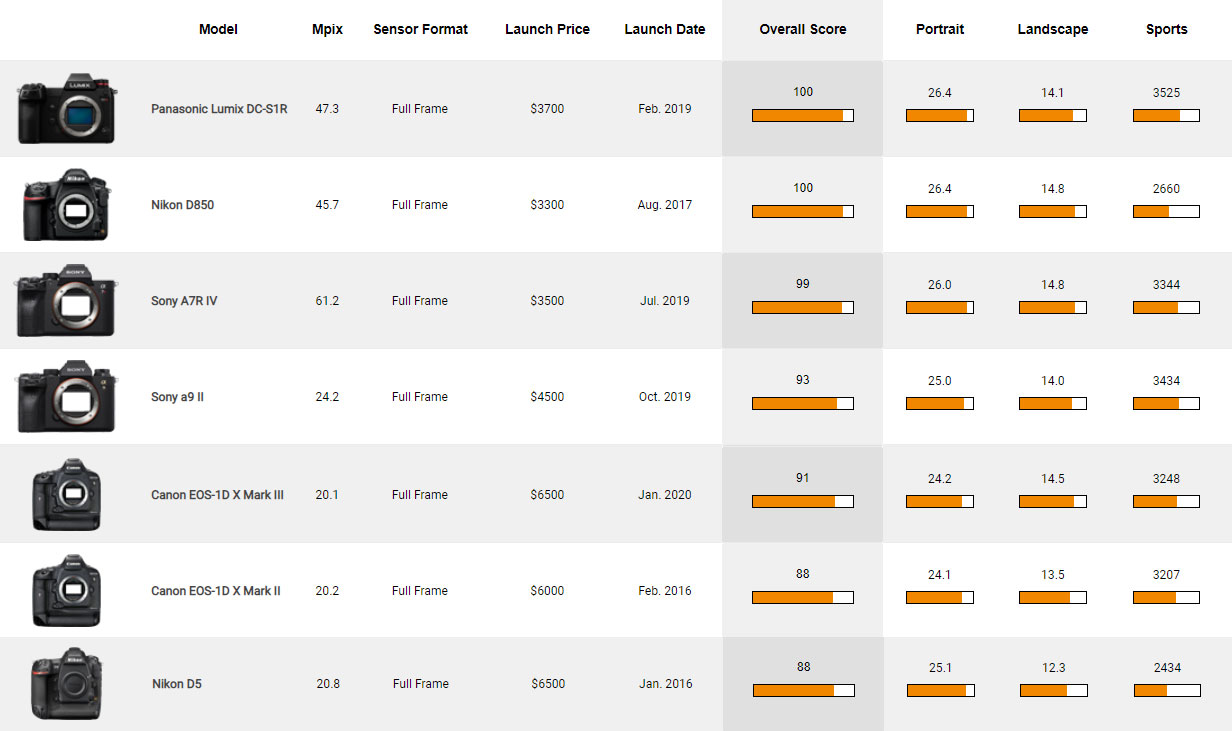
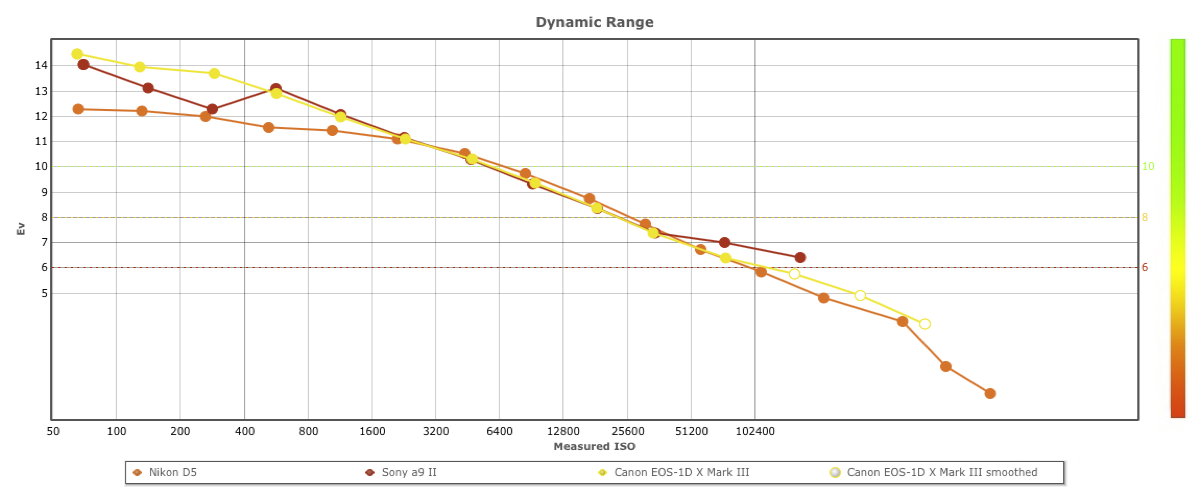
DXOMARK encourages its readers to share comments on the articles. To read or post comments, Disqus cookies are required. Change your Cookies Preferences and read more about our Comment Policy.